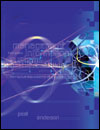Complex decisions, such as diagnostic problems, require more sophisticated computer tools.
Expert systems can be used to solve complex problems if the problem can be narrowed
down to a specific problem. Expert systems ask questions of the users and trace through
rules to make recommendations. The systems can also trace backward through the rules to
explain how they arrived at various questions or conclusions. Expert systems can be built
using shells that contain the logic needed to process the rules. Research into making machines more intelligent has led to several techniques and tools
that can be useful in solving some problems. Pattern recognition is being studied with neural
networks. Pattern recognition problems are involved in handwriting and voice recognition,
vision systems, and in statistical applications. Researchers are also working on robotics and
motion—especially combined with vision systems that will enable robots to navigate their
way through new areas. These techniques are still young and have many limitations. One of their most important
uses will be the ability to improve the interaction between computers and humans. The better
that computers can be adapted to humans, the easier it will be to use them. Voice recognition
and language comprehension systems are important steps in that direction. Although
current technology is still somewhat limited, considerable progress has been made over the
last few years. | 



 2003 McGraw-Hill Higher Education
2003 McGraw-Hill Higher Education